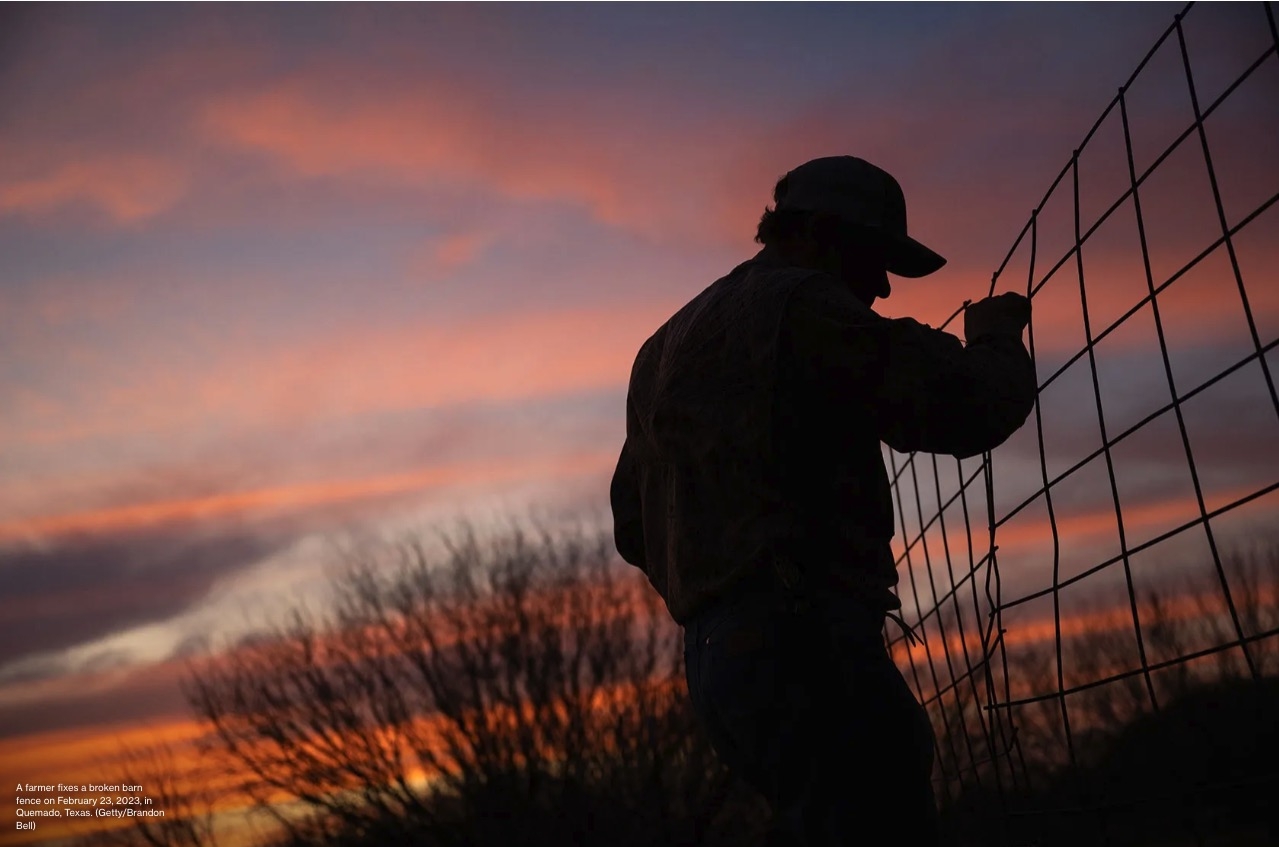Project 2025: How It Could Reshape Small Towns, Farmers, and Rural America

Rural America, home to nearly 60 million people (about 19% of the U.S. population), plays a crucial role in the nation's economy, agriculture, and energy production. However, small towns and farming communities already face numerous challenges, including declining populations, hospital closures, economic stagnation, and climate-related disasters.
Project 2025, a policy initiative led by the Heritage Foundation, proposes a radical restructuring of the federal government, aiming to reduce regulations, cut federal spending, and shift power from federal agencies to state and local governments. While some believe these policies could lead to economic growth, others fear they may disproportionately harm rural communities that rely on federal support for infrastructure, agriculture, and healthcare.
This blog will explore how Project 2025’s proposals could affect rural America, using real-world data, expert opinions, and historical examples.
1. The Impact on Small Towns
A. Federal Program Cuts and Their Consequences
Many small towns rely on federal funding to support economic development, housing, and infrastructure. Project 2025 calls for reducing or eliminating programs that directly support these communities, including:
-
Community Development Block Grants (CDBG) – Provided $3.3 billion in funding in 2023 to help rural areas improve public services, infrastructure, and housing. If eliminated, many towns could struggle to maintain public projects.
-
USDA Rural Development Programs – The USDA invested $43 billion in rural communities in 2021, funding small business loans, housing, and utilities. Cuts could lead to fewer business grants and reduced access to affordable housing.
-
Public Transportation Grants – The Rural Area Formula Grant provided $877 million in 2023 to help rural communities maintain bus and shuttle services. Without funding, elderly and low-income residents may lose essential transportation options.
🔹 Real-World Example: Clay County, Kentucky, one of the poorest rural counties in America, received $2.5 million in federal grants for water system improvements and broadband expansion in 2022. If these funds are cut, many residents could be left without reliable utilities.
B. The Rural Healthcare Crisis
Access to healthcare is already limited in rural areas. Since 2010, more than 140 rural hospitals have closed due to financial struggles, and over 600 additional hospitals are at risk of closure, according to the Center for Healthcare Quality and Payment Reform.
Project 2025’s push to reduce Medicaid spending and federal healthcare funding could worsen this crisis by:
-
Cutting Medicaid Expansion – 38% of rural children and 15% of rural seniors depend on Medicaid. Reductions could leave millions without healthcare.
-
Reducing Rural Hospital Funding – Rural hospitals operate on thin margins, and 63% of them depend on Medicare and Medicaid reimbursements. Cuts could lead to more closures.
-
Impacting Mental Health Services – Suicide rates in rural areas are 64% higher than in urban areas, yet 65% of rural counties lack a psychiatrist. Project 2025’s focus on privatizing healthcare could make mental health care even less accessible.
🔹 Real-World Example: The Noxubee General Hospital in Mississippi, serving a population of 11,000, relies on Medicaid reimbursements for 75% of its funding. If these funds are cut, it may close, forcing residents to travel over 50 miles for emergency care.
C. Environmental Deregulation and Its Consequences
Project 2025 aims to roll back environmental protections, arguing that they impose excessive costs on businesses. However, relaxed regulations could increase pollution, threaten water safety, and harm small farmers.
-
Water Contamination – The Clean Water Act protects 70% of U.S. drinking water sources. Deregulation could lead to increased industrial pollution in rural areas.
-
Air Quality Risks – The rollback of emissions standards could lead to more pollution in small towns near power plants or industrial facilities.
-
Farmland Degradation – Over 30% of U.S. farmland is already at risk of soil erosion. Reduced conservation funding could worsen soil loss, impacting long-term food production.
🔹 Real-World Example: In North Carolina’s Duplin County, relaxed regulations on large-scale hog farms led to severe water pollution, affecting over 50,000 residents. A similar lack of oversight in other rural areas could lead to more environmental crises.
2. The Impact on Farmers
A. Changes to Farm Subsidies and Crop Insurance
Federal subsidies help farmers manage extreme weather, market fluctuations, and production costs. Project 2025 proposes a free-market approach, potentially reducing:
-
Farm Subsidies – The federal government provides $20 billion annually in subsidies, with 39% going to small and medium-sized farms. Cuts could make it harder for smaller farmers to stay afloat.
-
Crop Insurance – In 2023, the federal government provided $11 billion in crop insurance to help farmers recover from disasters. Without it, a single drought or flood could force farms into bankruptcy.
🔹 Real-World Example: In 2022, a historic drought in Kansas and Nebraska caused over $2 billion in agricultural losses. Federal crop insurance covered 60% of losses. Without this support, thousands of farms might have gone under.
B. Labor Shortages and Immigration Policy
American farms rely heavily on H-2A visas for seasonal labor. Project 2025’s proposals to restrict immigration further could lead to severe worker shortages.
-
70% of U.S. farm labor comes from migrant workers.
-
The U.S. needs over 300,000 H-2A workers annually to maintain food production.
-
Stricter immigration rules could increase food prices by 20-30% due to labor shortages.
🔹 Real-World Example: In California’s Central Valley, tougher immigration laws in 2019 led to $3 billion in unharvested crops due to labor shortages. Similar policies nationwide could drive up food prices for all Americans.
3. The Impact on Rural America as a Whole
A. Declining Public Education Funding
Project 2025 proposes reducing federal education funding and shifting more responsibility to states. This could:
-
Cut funding for Title I grants, which support over 20 million low-income students, many in rural areas.
-
Reduce federal support for special education programs, affecting 7 million students.
-
Eliminate Pell Grants, which helped 7 million students afford college in 2023.
🔹 Real-World Example: In Appalachian Kentucky, federal grants fund over 60% of school technology programs. Without them, many schools could be left behind in an increasingly digital world.
B. Broadband Access and Infrastructure
Rural broadband access remains a major barrier to economic growth, with 22% of rural Americans lacking high-speed internet. Project 2025’s focus on reducing federal broadband investment could:
-
Slow business growth, as 42% of rural businesses rely on online sales.
-
Limit telehealth expansion, which could benefit over 10 million rural residents.
-
Widen the education gap, as 35% of rural students lack reliable internet.
🔹 Real-World Example: The Broadband ReConnect Program has helped over 3 million rural Americans gain internet access. If cut, many will remain disconnected.
The Future of Rural America Under Project 2025
The policies outlined in Project 2025 have the potential to reshape the economic landscape of rural America, challenge the stability of family farms, and reduce access to essential services like healthcare, education, and infrastructure. While proponents argue that cutting regulations and government spending will lead to greater economic freedom, the reality for many small towns and farmers may be increased financial uncertainty, limited resources, and a growing divide between urban and rural opportunities.
Rural hospitals could close at an even faster rate, leaving millions without nearby medical care. Small farmers, already struggling with unpredictable markets and climate challenges, may face financial collapse if subsidies and insurance programs are slashed. Communities relying on federal infrastructure projects—whether for broadband expansion, clean water systems, or road maintenance—may find themselves falling further behind in an increasingly digital and urban-driven economy.
At its core, Project 2025 presents a critical crossroads for rural America. Will these policies encourage economic self-sufficiency, or will they strip away vital support systems that help small towns and farming communities survive? As the debate over these policies continues, it is crucial for rural residents, farmers, and small business owners to stay informed, engage in discussions, and advocate for policies that protect their way of life. The choices made in the coming years will determine whether rural America thrives—or struggles to survive—in the wake of these proposed changes.
- Art
- Business
- Causes
- Crafts
- Community
- Dance
- Drinks
- Εκπαίδευση
- Fashion
- Film
- Fitness
- Food
- Παιχνίδια
- Gardening
- Health
- Κεντρική Σελίδα
- LGBTQ+ News
- Literature
- Music
- News
- Nature
- Networking
- Oddities
- άλλο
- Party
- Politics
- Religion
- Science
- Shopping
- Sports
- Theater
- Wellness



